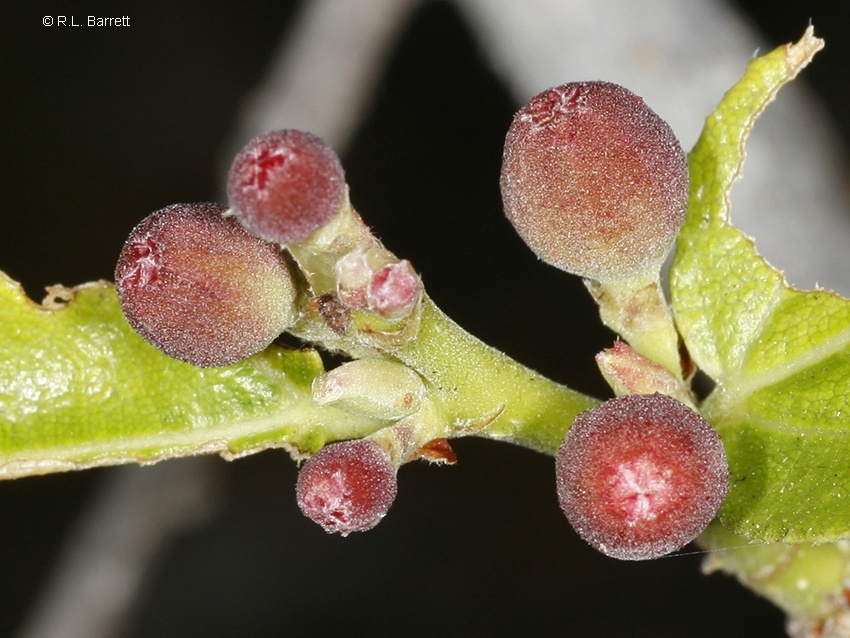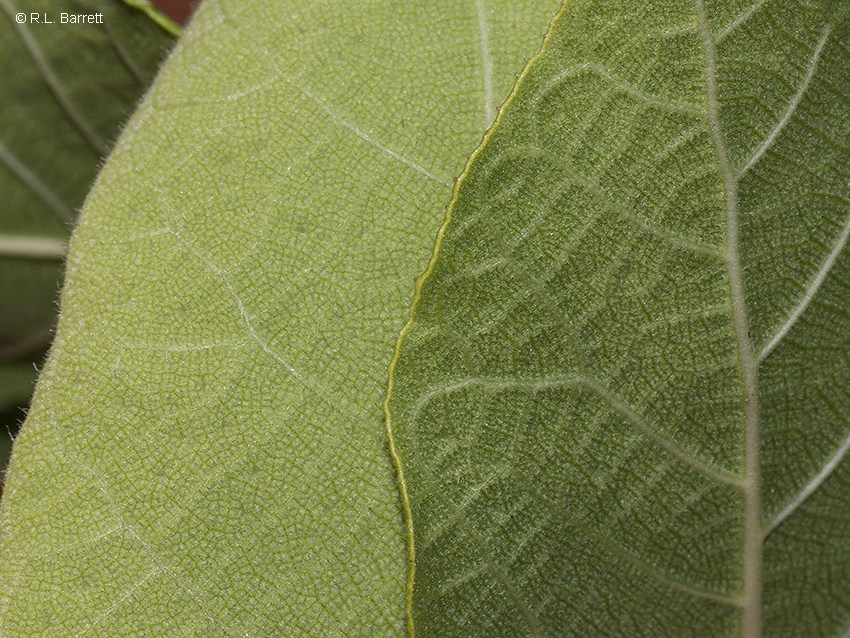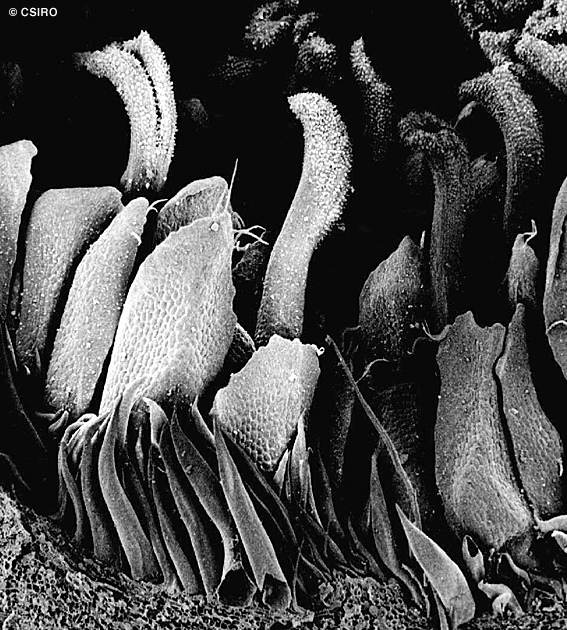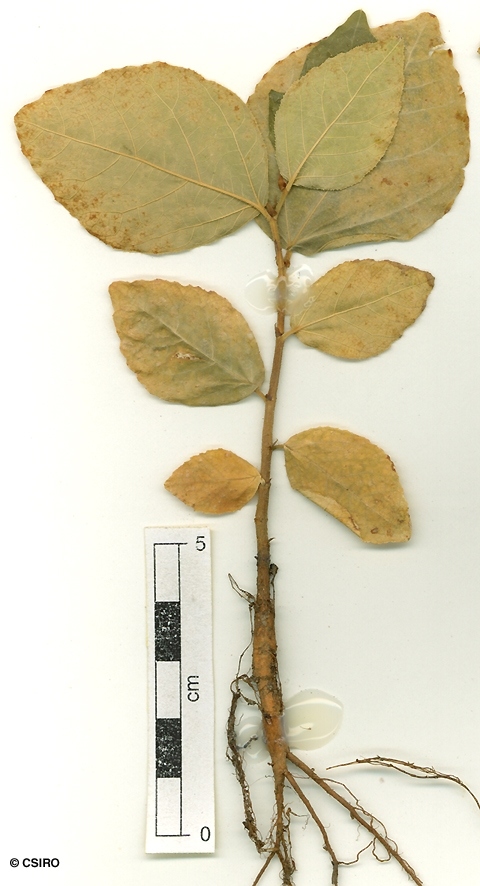Australian Tropical Rainforest Plants - Online edition
Ficus aculeata A.Cunn. ex Miq.










Miquel, F.A.W. (1848) London Journal of Botany 7: 426. Type: "In Ora boreali (Novae Holl.?) Hb. Hook.!".
Fig, Sandpaper; Fig; Sandpaper Fig
Not a strangling fig. Seldom exceeding 30 cm dbh.
Petioles and twigs produce a watery, milky exudate. Leaf blades about 9 x 6 cm, sandpapery on both the upper and lower surfaces. Stipules about 0.4-1 cm long, hairy on the outer surface. Leafy twigs sandpapery.
Figs pedunculate, globular, about 7-10 mm diam. Orifice closed by interlocking and inflexed bracts.
Cotyledons about 4 x 4 mm, petioles about 1 mm long. First leaves small and hairy, about 10 x 8 mm. At the tenth leaf stage: leaf blade about 4.8-5.5 x 4-4.5 cm. Leaf blade margin dentate, underside hispid (feels like sandpaper). Stipules narrowly triangular, about 3 mm long. Seed germination time 20 days.
Endemic to Australia, occurs in WA, NT, CYP and NEQ. Altitudinal range from near sea level to 450 m. Grows in open forest, gallery forest, monsoon forest and vine forests.
Two varieties occur: var aculeata in WA, NT, CYP and NEQ (leaf undersurface densely hairy obscuring the aereoles) and var. indecora in WA and NT (leaf undersurface less hairy and aeroles visible).





